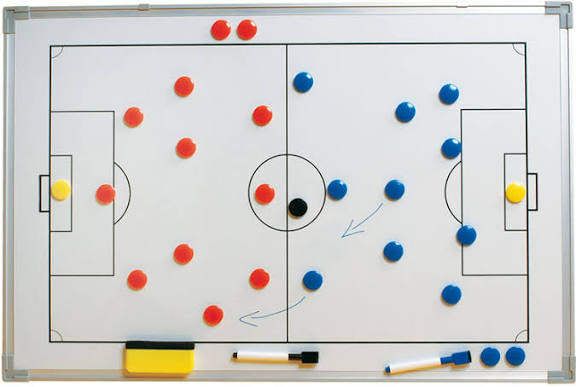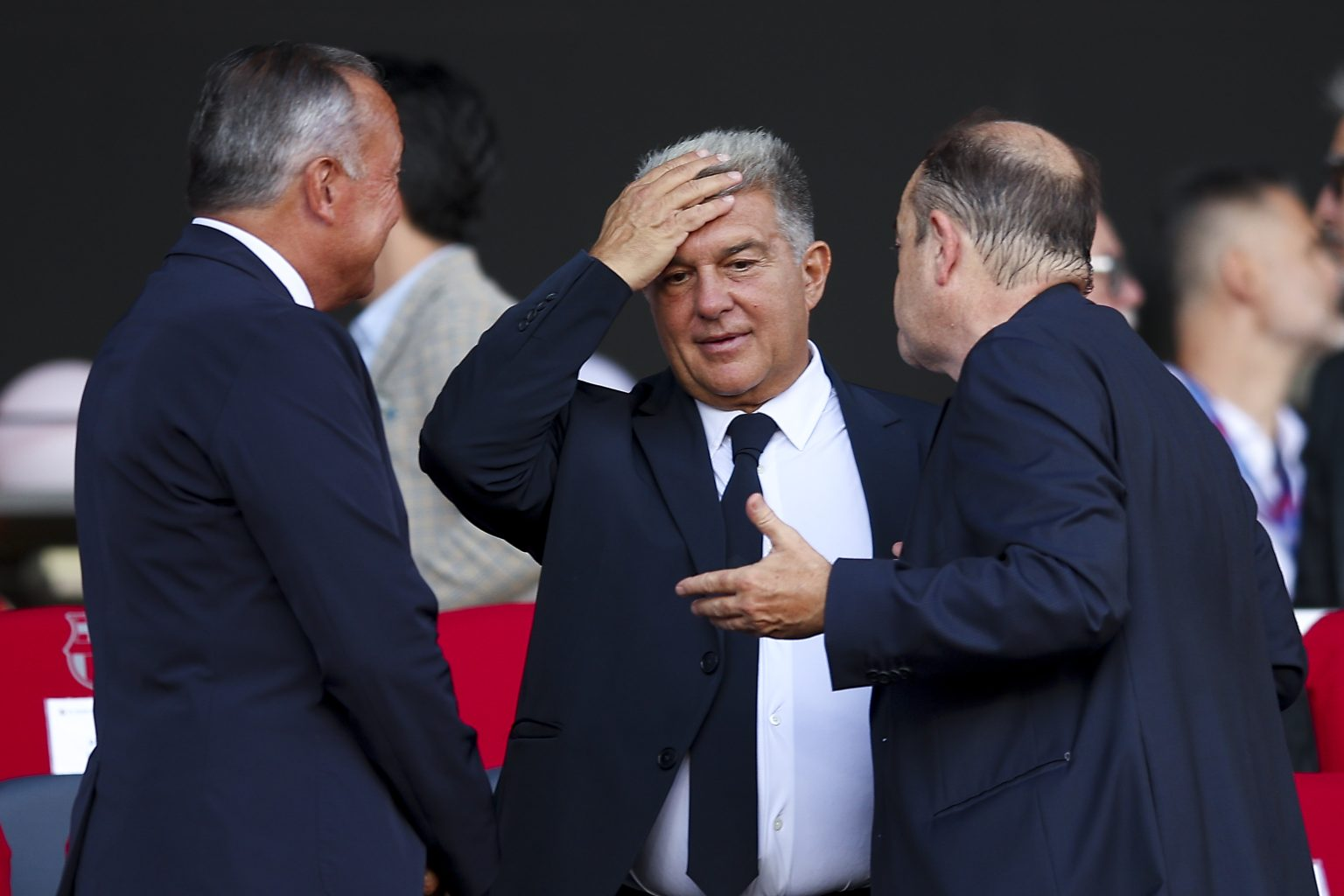Tactics Over the Years : How They’ve Shifted
What Is To Come

If you had told Arrigo Sacchi in the 90s that fullbacks would start inverting into midfield at some point, he probably would have called you crazy but that’s exactly what is happening today. Every football era has its own language, and tactics are how it speaks. They decide how teams win, how fans remember them, and how the sport itself evolves. Some systems were born out of necessity, others from genius. Each new idea was a response to what came before it, a counter, a correction, or an evolution.
But football tactics aren’t just about formations, they’re reflections of mindset. From the cold precision of Italian defences to the freedom of Brazilian flair, from total control to total chaos, every shift in philosophy has shaped how we see the game. And the truth is, football doesn’t reinvent itself, it recycles and refines.
The 1950s were when football began to split in two, structure versus freedom, calculation versus creativity. On one side of Europe stood Italy, fine-tuning the art of defence. Catenaccio, meaning “door bolt,” became the tactical buzzword. Inter Milan under Helenio Herrera perfected it, tight man-marking, a sweeper behind the back line, and lightning counters. It wasn’t built to entertain, it was built to win. Every pass, every clearance, every tackle was part of a plan. Efficiency ruled emotion.
On the other side stood Real Madrid, rewriting what attacking football could look like. Between 1956 and 1960, they won five straight European Cups playing almost the opposite way, expressive, fluid, and spontaneous. Di Stéfano dropped deep to orchestrate play, Gento stretched the pitch, and Puskás delivered ruthlessness in front of goal. Madrid’s style wasn’t about systems, it was about trust and talent. Where Catenaccio prioritised control, Madrid thrived on chaos. Those two philosophies, Italian order and Spanish freedom, defined the decade. One taught football discipline; the other reminded it to breathe.
If the 1950s and 60s were about opposites, the 1970s were about blending them. Out went rigidity, in came fluidity. The Dutch, led by Rinus Michels and Johan Cruyff, introduced Total Football, a system that allowed players to interchange positions freely while maintaining tactical balance. It was freedom through organisation, creativity within structure.
Ajax and the Netherlands national team showed that movement could be as dangerous as a pass. Defenders could step into midfield, forwards could drop deep, and the shape always adapted. It was football as something close to geometry, every player understanding space as both a weapon and a shield. The brilliance of it wasn’t just the style, but the thinking behind it, every player was a thinker, every touch part of a collective flowing sequence.
Total Football didn’t just change tactics; it changed footballers. It birthed the idea that intelligence could outplay power, and that finding space, not possession or territory, was the real battle.
The 1980s and 1990s brought football back down to earth. The 4-4-2 became the world’s default, simple, solid, and adaptable. It valued balance over brilliance, strike partnerships, natural width, and a midfield built to both destroy and create. It was the formation of responsibility.
In England, especially at Man United under Sir Alex Ferguson it embodied intensity and directness, crosses, headers, and second balls. Across Europe, managers like Arrigo Sacchi at Milan redefined it with pressing and compactness, turning what looked basic into an art form of organisation. Sacchi’s Milan pressed high, stayed narrow, and attacked in disciplined waves, tactical order wrapped in energy.
The 4-4-2 era proved that football didn’t need complexity to be effective. It was practical, physical, and easy to understand, the blueprint for generations. For two decades, it was the shape of football’s working class, honest, balanced, and not particularly flashy or flary.
The 2000s belonged to the architects. Possession became football’s new obsession, and no one mastered it like Pep Guardiola’s Barcelona. With Xavi, Iniesta, and Busquets forming the engine, and Messi evolving into a false nine, tiki-taka turned control into a weapon. It wasn’t just about keeping the ball ,it was about suffocating opponents with patience, with pausa.
Spain’s dominance from 2008 to 2012, two Euros and a World Cup, proved the method worked internationally too. Football became a chess game played at full speed. But with control came predictability. As teams built to hold the ball, others started preparing to take it from them. Tiki-taka may have defined an era, but it also gave rise to the system that would later dethrone it.
The 2000s were about slowing the game down, the 2010s sped it right back up. Jurgen Klopp’s Dortmund and later Liverpool made gegenpressing, heavy metal football as it was called, the immediate hunt for the ball after losing it, the new frontier. Energy became currency, and chaos became structure. Teams didn’t just defend anymore, they attacked with transitions.
Meanwhile, managers like Nagelsmann and Tuchel added layers of intelligence to the high press, turning it into something sustainable. Even Guardiola adapted, blending pressing with his positional play at Manchester City, proof that intensity and control could coexist.
The result was a decade defined by tempo. The best teams didn’t just win possession; they weaponised moments. Every turnover became an opportunity. Every second without the ball was a second wasted.
Football today isn’t about one philosophy ruling all, it’s about mixing them. Managers now pick from decades of ideas, blending pressing, possession, and pragmatism into systems that shift mid-game. Inverted fullbacks indeed became a reality, started by Pep Guardiola. De Zerbi, and Ancelotti adjust shapes based on opponents, form, and even individual confidence. Mikel Arteta meanwhile has built a system that values territorial control as much as possession. Arsenal press high, suffocate space, and move the ball with precision, but they also protect transitions with near-military discipline. Players like Declan Rice, Saliba, and Gabriel have made Arsenal one of the most balanced sides in Europe, equally comfortable with and without the ball.
Formations are now fluid: 3-2-5s in possession, 4-4-2s out of it, and box midfields that morph constantly. The line between positions has blurred, full-backs create, centre-backs dribble, wingers defend. What started with Total Football’s movement has matured into tactical flexibility on a global scale. The game is faster, smarter, and more adaptable than ever. Football today is not particularly about ideology anymore, it’s about efficiency. Winning has become the philosophy.
Every system that dominates football tends to eventually be undone by the next one. Catenaccio stopped flair, Total Football broke structure, tiki-taka suffocated opponents, and gegenpressing punished hesitation. It’s a constant cycle of problem-solving, every style exposing the limits of the one before it.
Tactics evolve, recycle, and return dressed differently, but the core remains the same: control the game, control the result. From Herrera’s Inter to Guardiola’s City, football has moved in circles, each one tighter and smarter than the last. And the beauty of it all is that the next revolution might already be in the works somewhere, on a training pitch, in someone’s notebook, ready to change the game all over again.








